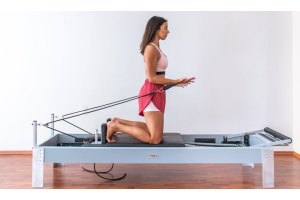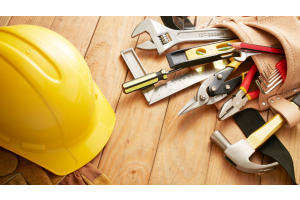Articulating the Spine in Pilates

The Pilates method aims to develop both stability and mobility in the spine, so that movement can take place in a free and unrestricted fashion. To achieve this overarching goal, each vertebra must be able to articulate freely with adjacent vertebra, allowing just the right amount and type of movement to take place.
At an individual level, vertebra allow very little movement. However, the cumulative effect of all these small and intricate movements creates a highly functional and somewhat mobile spinal column that is able to tolerate the stresses of daily living. Too much stability will create a rigid and immobile spine, whereas too much mobility will contribute to spinal instability. Both are recipes for dysfunction and pain and so a balance must be established. This is a key goal in Pilates.
From an anatomical perspective, effective spinal articulation necessitates high-levels of muscle control, especially from the deep local muscles of the spine that sit close to the vertebrae, like multifidus, interspinales, rotatores and intertransversarii. Spinal articulation requires micro control of these muscles to ensure that the movement of each vertebra can be carefully controlled, and that any existing instability that may be present as a result of trauma, poor posture, and/or a sedentary lifestyle can be limited. The global and superficial muscles like the rectus abdominis and the erector spinae group will at times act as movement initiators, but the goal here is to minimise their involvement so that the smaller local muscles are challenged.
It is also worth noting that in Pilates, terms like spinal articulation are used interchangeably with segmental control, segmental stability and sequential control and movement. Effectively they are all describing the same thing, which is the ability to control micro movements of the vertebra.
Spine Articulation Exercises
In reformer and matwork Pilates, exercises are routinely taught as a series, requiring participants to perform a range of exercises in a particular order and sequence in order to complete that series. Exercises in the spine articulation series focus on mobilising the spine and developing sequential control of each spinal segment, allowing one vertebra at a time to either flex or extend as required. In matwork, those exercises that are commonly taught to promote spinal articulation include a standing forward fold, the cat, the seated c-curve and the roll-up. In reformer, these exercises include the bridge, the extended bridge, the short-spine stretch and the semi-circle.
Spinal articulation movements require high-levels of concentration and control. They also require an effective pattern of breathing to maximise the engagement of the transverse abdominis and other muscles that provide support and stabilise the spine. On the inhalation, the breath should be slow and deliberate, ensuring that all the air is squeezed from the lungs through pursed lips.
Cueing Spinal Articulation
Various movement cues can be used to describe these stacking and un-stacking movements. Joseph Pilates used the terms ‘rolling’ and ‘unrolling’, whereas Rael Isacowitz, a prominent Pilates educator, uses the waves rolling in and out visual. Another cue that is commonly to create a visual image of spinal articulation is imagining a string of beads being peeled up and placed back down. Regardless of the technique used, the method of providing a visual reference can really help to deepen participant’s understanding of how the movement should both look and feel. It can also help to create a more rhythmic and flowing Pilates practice.
Precautions
Some spinal articulation exercises will be unsuitable for participants who have a history of low back pain, especially when it involves loaded spinal flexion (e.g. forward folds). However, these exercises can often be modified by reducing the range and taking away the loads created by gravity and bodyweight (e.g. lying pelvic tilts), thereby allowing some degree of articulation and control to be developed.
“If your spine is inflexible and stiff at 30, you are old; if it is completely flexible at 60, you are young”.
Joseph Pilates
About the Author
Lee Cain is the founder and Managing Director of HFE, a UK-based training provider delivering matwork and reformer Pilates teacher courses. Lee is qualified Mat Pilates teacher who holds a First-Class honours Degree in Sport and Exercise Science. He is also a Certified Strength and Conditioning Specialist (CSCS) with the National Strength and Conditioning Association (NSCA). He has been teaching fitness education programmes in the UK for over 20 years and has trained thousands of exercise professionals.




